Potrebujeme váš súhlas na využitie jednotlivých dát, aby sa vám okrem iného mohli ukazovať informácie týkajúce sa vašich záujmov. Súhlas udelíte kliknutím na tlačidlo „OK“.
ASTM D1499-13
Standard Practice for Filtered Open-Flame Carbon-Arc Exposures of Plastics
Automaticky preložený názov:
Štandardné praktiky pre filtrovanej Open-Flame Carbon-Arc snímok z plastu
NORMA vydaná dňa 15.7.2013
Informácie o norme:
Označenie normy: ASTM D1499-13
Poznámka: NEPLATNÁ
Dátum vydania normy: 15.7.2013
Kód tovaru: NS-17452
Počet strán: 5
Približná hmotnosť: 15 g (0.03 libier)
Krajina: Americká technická norma
Kategória: Technické normy ASTM
Kategórie - podobné normy:
Anotácia textu normy ASTM D1499-13 :
Keywords:
carbon-arc, degradation, exposure, light exposure, open-flame carbon-arc, ultraviolet, ICS Number Code 83.080.01 (Plastics in general)
Doplňujúce informácie
| Significance and Use | ||||||||||||||||||||||||
|
4.1 The ability of a plastic material to resist deterioration of its electrical, mechanical, and optical properties caused by exposure to light, heat, and water can be very significant for many applications. This practice is intended to induce property changes associated with end-use conditions, including the effects of sunlight, moisture, and heat. The exposure used in this practice is not intended to simulate the deterioration caused by localized weather phenomena, such as, atmospheric pollution, biological attack, and saltwater exposure. 4.2 Cautions—Variation in results may be expected when operating conditions are varied within the accepted limits of this practice. Therefore, no reference to the use of this practice shall be made unless accompanied by a report prepared in accordance with Section 9 that describes the specific operating conditions used. Refer to Practice G151 for detailed information on the caveats applicable to use of results obtained in accordance with this practice. 4.2.1 The spectral power
distribution of light from an open-flame carbon-arc is
significantly different from that produced in light and water
exposure devices using other carbon-arc configurations or other
light sources. The type and rate of degradation and the performance
rankings produced by exposures to filtered open-flame carbon-arcs
can be much different from those produced by exposures to other
types of laboratory light sources.
4.2.2 Interlaboratory comparisons are valid only when all laboratories use the same type of carbon-arc, filters, and exposure conditions. 4.3 Reproducibility of test results between laboratories has been shown to be good when the stability of materials is evaluated in terms of performance ranking compared to other materials or to a control.5,6 Therefore, exposure of a similar material of known performance (a control) at the same time as the test materials is strongly recommended. It is recommended that at least three replicates of each material be exposed to allow for statistical evaluation of results. 4.4 Test results will depend upon the care that is taken to operate the equipment in accordance with Practice G152. Significant factors include regulation of line voltage, freedom from salt or other deposits from water, temperature and humidity control, and conditions of the electrodes. |
||||||||||||||||||||||||
| 1. Scope | ||||||||||||||||||||||||
|
1.1 This practice covers specific procedures and test conditions that are applicable for exposure of plastics in filtered open-flame carbon-arc devices conducted in accordance with Practices G151 and G152. This practice also covers the preparation of test specimens, the test condition suited for plastics, and the evaluation of test results. 1.2 This practice does not cover enclosed carbon-arc exposures of plastics, which had been allowed in Practice D1499. Enclosed carbon-arc exposures of plastics are described in Practice D6360, and in G153, which gives requirements for exposing nonmetallic materials in enclosed carbon-arc devices. 1.3 The values stated in SI units are to be regarded as standard. The values in parentheses are given for information only. 1.4 This standard does not purport to address all of the safety concerns, if any, associated with its use. It is the responsibility of the user of this standard to establish appropriate safety and health practices and determine the applicability of regulatory limitations prior to use.
|
ISO?4892-4
|
Plastics--Methods of Exposure to Laboratory Light Sources--Part 4, Open-Flame Carbon Arc Lamp
|
|
Standard Guide for Application of Basic Statistical Methods to Weathering Tests
|
|
Standard Practice for Operating Enclosed Carbon Arc Light Apparatus for Exposure of Nonmetallic Materials
|
|
Standard Practice for Operating Open Flame Carbon Arc Light Apparatus for Exposure of Nonmetallic Materials
|
|
Standard Practice for Calculating Property Retention Index of Plastics
|
|
Standard Practice for Exposing Nonmetallic Materials in Accelerated Test Devices that Use Laboratory Light Sources
|
|
Standard Practice for Conducting an Interlaboratory Study to Determine the Precision of a Test Method
|
|
Standard Terminology Relating to Natural and Artificial Weathering Tests of Nonmetallic Materials
|
|
Standard Guide for Addressing Variability in Exposure Testing of Nonmetallic Materials
|
|
Practice for Interlaboratoy Testing of Paint and Related Materials (Withdrawn 1998)
|
|
Standard Practice for Conditioning and Handling of Nonmetallic Materials for Natural and Artificial Weathering Tests
|
|
Standard Practice for Enclosed Carbon-Arc Exposures of Plastics |
Podobné normy:
Historická
1.9.2007
Historická
1.9.2013
Historická
1.9.2009
Historická
15.3.2010
Historická
1.8.2012
Historická
1.7.2010
Odporúčame:
Aktualizácia technických noriem
Chcete mať istotu, že používate len platné technické normy?
Ponúkame Vám riešenie, ktoré Vám zaistí mesačný prehľad o aktuálnosti noriem, ktoré používate.
Chcete vedieť viac informácií ? Pozrite sa na túto stránku.


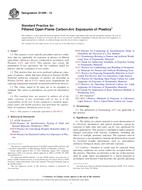
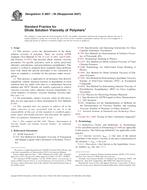 ASTM D2857-95(2007)..
ASTM D2857-95(2007)..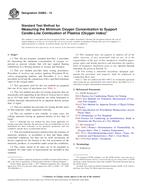 ASTM D2863-13
ASTM D2863-13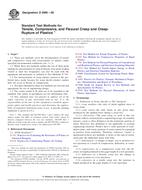 ASTM D2990-09
ASTM D2990-09 ASTM D3045-92(2010)..
ASTM D3045-92(2010)..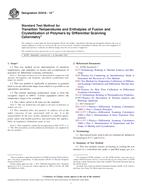 ASTM D3418-12e1
ASTM D3418-12e1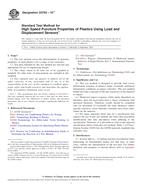 ASTM D3763-10e1
ASTM D3763-10e1
 Cookies
Cookies
